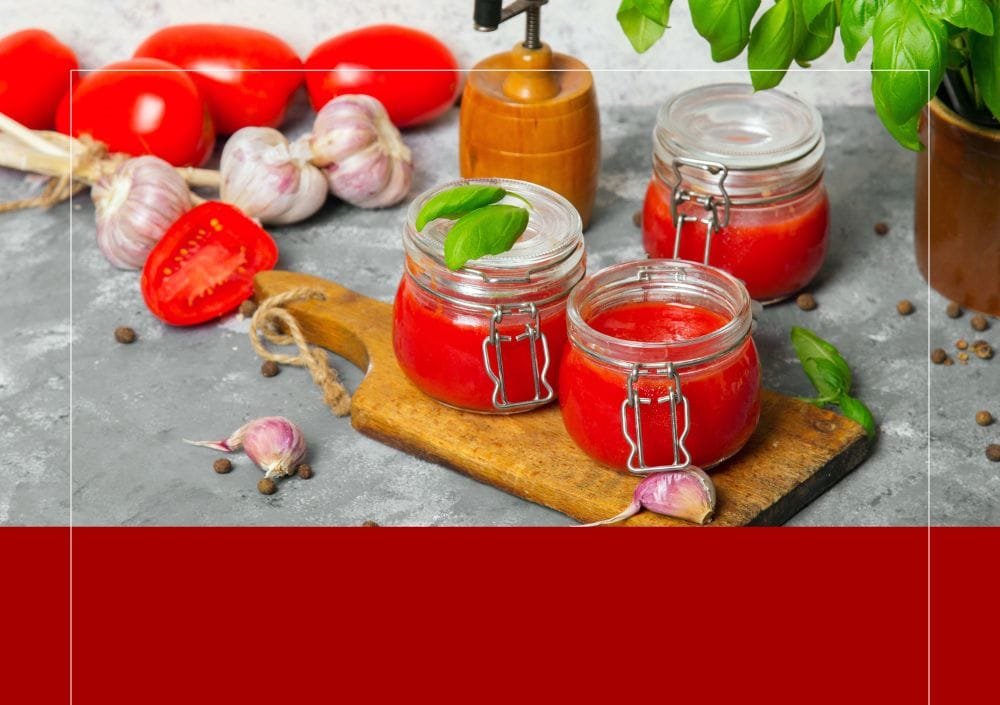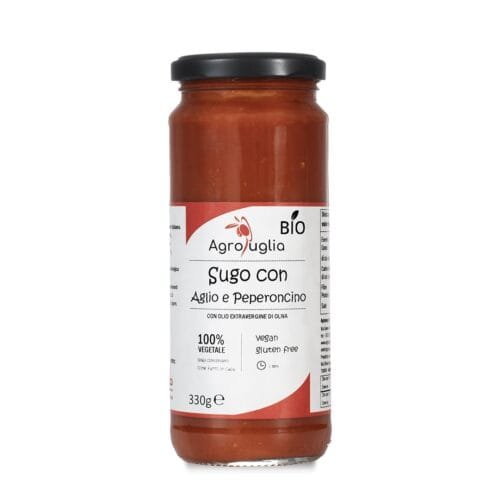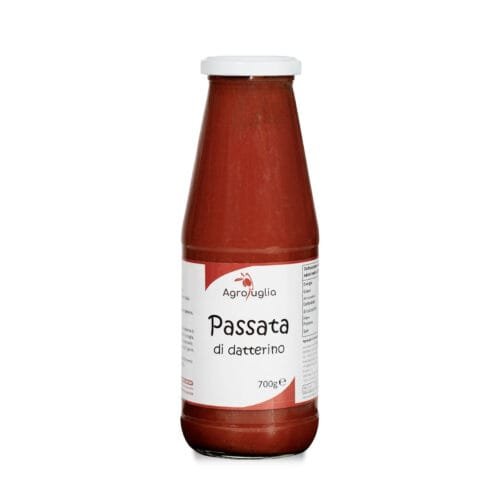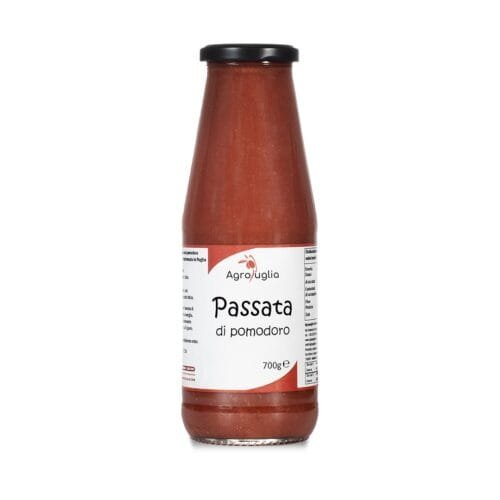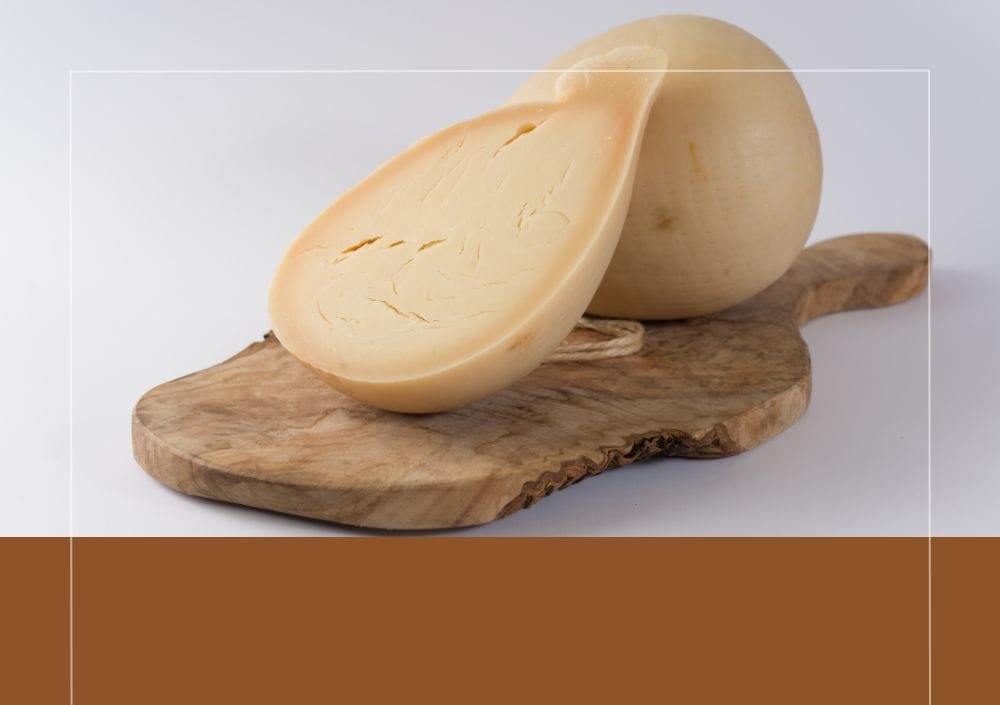Pugliese Tomato Purée: Quality and Tradition at the Table
The Pugliese tomato purée represents an icon of Italian cuisine, deeply rooted in the tradition of Salento. This product, made from ripe and fresh tomatoes, plays a central role in the preparation of numerous dishes. Its superior quality and authentic flavor make it a preferred choice not only for professional chefs but also for home cooking enthusiasts.
In this article, we will explore the rich history behind Pugliese tomato purée. As one of the typical Puglian preserves, it embodies the essence of the culinary tradition of this sunny southern Italian region. Furthermore, we will discuss how to choose the best tomato purée and introduce some creative recipes to enhance your dishes. Finally, we will examine the key differences between artisanal and industrial purées, such as the famous Mutti tomato purée and those prepared using the Bimby, helping readers make informed choices for their culinary creations.
The Tradition of Tomato Purée in Puglia
Historical Origins
Puglian tomato purée has deep roots in the region’s agricultural tradition. The need to preserve the summer harvest for the winter months led to its creation. During the hot summer, the Puglian sun enabled the land to produce an abundance of tomatoes, often more than could be consumed immediately. To avoid waste and ensure supplies for the winter, families began transforming the tomatoes into purée, a tradition that endures today.
Traditional Production Methods
The production of tomato purée in Puglia is more than just a task; it’s a family ritual. Traditionally, preparations began at dawn, with each family member playing a specific role in preparing bottles, pots, and all necessary equipment. Unlike modern methods, the traditional approach involved a prolonged boiling of the purée, preserving the tomato’s natural water, which is rich in nutrients. This water contributes to the purée’s extraordinary flavor.
Varieties of Tomatoes Used
The choice of tomato varieties is crucial for creating authentic Pugliese purée. Smooth, round tomatoes are most commonly used due to their bright red color, dense and firm flesh, minimal seeds, and sweet taste. Other varieties include the Pugliese datterino, Regina tomato, and Pugliese cherry tomatoes. These tomatoes are grown in open fields, irrigated with brackish water, and allowed to ripen naturally on the plant to ensure maximum quality and authenticity.
Unique Characteristics of Puglian Purée
Texture and Color
One of the most distinctive features of Pugliese tomato purée is its thick and creamy texture, making it ideal for a variety of dishes. The bright red color of the purée reflects the high quality of the tomatoes used. Its appearance resembles homemade purée, with a slightly rough texture that enhances its authenticity. This consistency makes it perfect for blending with pasta, creating a rich and flavorful sauce.
Flavor and Aroma
The taste of Pugliese purée is intense and full-bodied, offering the perfect balance between sweetness and acidity. The purée’s flavor is authentic, evoking the taste of freshly harvested tomatoes due to the preservation of the fruit’s natural characteristics. Its aroma is rich and fragrant, reminding one of the sun-drenched fields of Puglia. While robust, the purée does not overpower other ingredients, allowing them to shine in every dish.
Nutritional Values
Puglian tomato purée is both nutritious and light. For every 100 grams, it provides between 18 and 38 calories. It is rich in vitamins, especially vitamin A (530 µg per 100g) and vitamin C (8 mg per 100g). The purée also contains essential minerals such as calcium (16 mg) and phosphorus (35 mg). With no saturated fats or cholesterol, and around 1.3 grams of protein per 100 grams, it is a healthy choice. Additionally, the purée offers dietary fiber (1.5-2.4 grams per 100g) and contains natural tomato sugars.
How to Choose a Quality Tomato Purée
Ingredients and Labels
When selecting a high-quality tomato purée, carefully read the label. The main ingredients should be tomatoes, with only minimal additions such as citric acid as a preservative and a moderate amount of salt. Check the origin of the tomatoes, and prioritize products that clearly state their Italian origin. Labels such as “100% Italian tomatoes” or “Origin of the tomatoes: Italy” ensure that the product was processed and packaged within Italy.
Certifications and Quality Marks
Certifications and quality marks are often indicators of high production standards. While not an absolute guarantee, these elements should be considered when choosing a product. They help ensure that the purée meets necessary quality standards.
Shopping Tips
When buying tomato purée, look for a vibrant and consistent color. The packaging may contain a code that indicates the production period. A letter represents the year, and a number denotes the day. A number between 190 and 290 suggests that the tomatoes were bottled fresh during their peak season. It is also advisable to avoid extremely cheap products, as they may raise concerns about the quality of the ingredients and production process.
Recipes and Creative Uses in the Kitchen
First Courses
Pugliese tomato purée serves as the perfect base for numerous traditional first courses. A classic example is orecchiette with tomato sauce, an iconic dish of Puglian cuisine. You can enhance it with cacioricotta, burrata, stracciatella, or ricotta forte for a delicious result every time. A fresh basil leaf is the finishing touch that completes the dish.
For Sunday lunch, baked pasta is a must. A simple yet satisfying version combines tomato purée, mozzarella, meatballs, Parmesan, and béchamel sauce. For seafood lovers, tubettini with mussels in tomato sauce is a delightful summer option. The secret of this dish lies in cooking the pasta directly in the sauce, allowing it to absorb the full flavor.
Second Courses
Among Puglian second courses, braciole (stuffed meat rolls) hold a place of honor. These rolls, made from horse or beef, are stuffed with parsley, garlic, and Pecorino cheese, then slowly cooked in a rich tomato purée. Another traditional dish is stuffed mussels, where the intense flavor of the mussels pairs beautifully with a soft bread-based filling.
Side Dishes and Sauces
Meatballs in tomato sauce are a classic, versatile side dish. Easy to prepare, they are best served with a generous amount of Pugliese purée. This simple yet flavorful dish is a staple on Puglian tables, adding a touch of tradition to any meal.
Conclusion
Pugliese tomato purée is more than just a condiment; it is a culinary treasure with a rich history. The traditional production techniques and the use of local tomato varieties result in a product with a unique flavor and superior quality. Not only does it elevate Italian dishes, but it also brings a piece of Puglian culture and tradition to the table.
The versatility of Pugliese purée makes it an essential ingredient for transforming simple meals into extraordinary dishes. Its authentic taste and nutritional benefits make it an ideal choice for anyone seeking quality and genuine flavors. To experience the goodness of this product, we invite you to explore our selection of Pugliese purées and sauces in our shop. Ultimately, Pugliese tomato purée is not just food; it is an experience that connects the past with the present, bringing a taste of Puglia to every kitchen.
FAQs
- Why is it necessary to cook tomato purée? Cooking tomato purée enhances the fresh flavor of the tomatoes and added seasonings, resulting in a richer and more intense taste.
- Where was tomato purée invented? Tomato purée originated in France, where Charles Nicolas Appert invented the preservation of tomato sauce in glass jars in 1796. Italy began producing tomato preserves in 1875, revolutionizing its cuisine.
- Why can tomato purée ferment? Fermentation occurs when spores inside the jar are not sterilized properly. These thermophilic spores, known as clostridia, start to grow as the sauce cools, causing fermentation.
- Why can tomato purée taste bitter? Sometimes tomato purée has a bitter or acidic aftertaste, which is common with both fresh and canned tomatoes. This is due to the natural acidity of the tomatoes.



